Showing 61–72 of 247 results

This book is an indispensable guide for an up-to-date system of values. What once used to be deadly sins threatening human salvation have now become socially acceptable; envy and greed are the driving forces behind a ruthless economic world. The deadly sins are as relevant today as ever before and it would be advisable not to leave the field open, but rather to counter them with a foundation of values that are up to date.
This book is an indispensable guide for an up-to-date system of values. What once used to be deadly sins threatening human salvation have now become socially acceptable; envy and greed are the driving forces behind a ruthless economic world; there are outbreaks of anger on the streets and in the football stadiums. The name of the game is manifold: stubbornness, impatience, narcissism and disloyalty.
Notker Wolf has taken an look at an interesting development. He finds examples in the Bible, in the ancient myths, in current affairs. His conclusion: the deadly sins are as relevant today as ever before and it would be advisable not to leave the field open to them in our (western) economic and social systems, but rather to counter them with a foundation of values that are up to date. Readers will recognize themselves and our day and age in the mirror of this book.

This book vividly analyses the Islamic legal theory and its development in varied phases, encompassing various regions, intellectual approaches and social practices, making it an appropriate legal system. It also features the great jurists of Central Asia and their monumental works.
Central Asia, since eighth century ce, has remained as one of the heartlands of Islam. Mawara al-Nahr (Transoxiania) is a name to reckon with in the annals of Islamic history and jurisprudence. The Abbasid rule (ce 7501258) in this steppe region paved the way for setting the Islamic culture, and the reflection of positive results and Islamic ideology in all facets of life, nourishing the Islamic tradition and immensely contributing to the various socio-political institutions as well as diverse fields of knowledge. The early development of Islamic sciences and the involvement and contribution of Muslim intellectuals of Central Asia in their further growth remain as a splendid chapter of the Islamic history.
This book represents Islam as a constructive force that nourished scholarship in varied Islamic sciences, especially in Islamic jurisprudence. It vividly analyses the Islamic legal theory and its development in varied phases, encompassing various regions, intellectual approaches and social practices, making it an appropriate legal system. Central Asia, along with other Islamic intellectual centres like Baghdad, Basrah, Kufa and Madina, maintained the lure of standardized scholarship.
This volume, while featuring the great jurists of Central Asia and their monumental works to the Islamic jurisprudence, initiates a debate on the relevance of Islamic legal theory and its interpretation in the contemporary socio-political scenario, thus providing certain possibilities of rediscovering Islamic jurisprudence for the present times. A book of high academic value, it should impress all in the field of Islamic history and legal system.
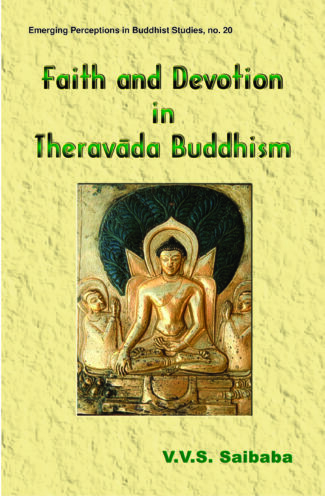
This is an analytical study of faith (saddha), devotion (bhatti) and worship (puja) in the Theravada school of Buddhism. It elucidates these concepts and deals with their objects, viz., gods in general and Buddha in particular as described in the Pali canonical, post-canonical and comment arial literature.
This is an analytical study of faith (saddha), devotion (bhatti) and worship (puja) in the Theravada school of Buddhism. It elucidates these concepts and deals with their objects, viz., gods in general, and Buddha in particular, as described in the Pali canonical, post-canonical and commentarial literature. The first chapter of this book examines the conception of the the Deities and the supernatural; the attributes, knowledge, powers and functions of Buddhist deities; their role as objects of meditation; how Theravada Buddhism is non-theistic and how its basic concepts are incompatible to the conception of Creator God. The second chapter discusses the special attributes, knowledge, powers and functions of the Buddha in the Theravada literature which establishes His supramundane character and spiritual eminence over gods, arhants and pratyekabuddhas. It throws light on the origins of Buddhas deification, his docetic conception and other Buddhological speculations which led him to become an object of highest reverence, adoration and devotion. The third chapter outlines the origin, nature and scope of faith and devotion for the Buddha in Theravada literature; how and why he has been regarded as the object of absolute confidence (saddha), recollection and contemplation (buddhanussati), devotion (bhatti) and worship (puja) and thereby viewed as Bhagavan and compassionate Saviour. The book provides an authentic and comprehensive account of faith (saddha) and devotion (bhatti) in Pali canonical and post-canonical literature of Theravada Buddhist School. This work is an invaluable aid to students, teachers and researchers of Pali literature and Buddhist philosophy.

The book containing spiritual and literary discourses of Sufi Shaikh Nizamuddin Awliya focuses on values that can create a true human being. It provides information on many Sufi saints and the ulama.
Fawaid al-Fuad is a monumental work of spiritual and literary discourses of Shaikh Nizamuddin Awliya who lived in medieval India. The book is a didactic classic in the form of recorded conversations. Devoid of supernatural elements, it provides useful information about a large number of Shufi saints and ulama. A living testimony to the accord between the Shariah and Tariqah, therein he spoke on the necessity of practising values that could transform man into a true human being, full of love, tolerance, forgiveness, patience, forbearance, sincerity in devotion, adherence to truth and generosity. Sufism or Islamic spiritualism that flourished in India with the advent of the Turkish rule in the 13th century forms the backdrop of this work. The moral teachings of his spiritual mentors, dwelt at length, in various majlises, constitute the bed-rock of this treatise which has great literary distinction. Written in fluent Persian prose style, it is embellished with apt verses to elucidate the points of discussion. The Shufi way of life and the teachings of the Chishtiyah order have been vindicated as a sharp contrast to the material prosperity, territorial conquest and the lust for power in the contemporary world. The compiler Amir Hasan Ala sijzi a great scholar of Persian language, has done a yeomans service in giving a definite shape to this monumental work. The Shaikhs didactic intention and spiritual flavour have been well-preserved through the compilers directness of style. Fawaid al-Fuad rendered into English from the original Persian text based on an ably edited edition of the book represents a serious attempt to understand the nuances of the mystic mind of a great shufi saint of the sub-continent. This academic venture of Prof. Faruqi will be of great use to lay readers as well as the scholars of Islamic mysticism.
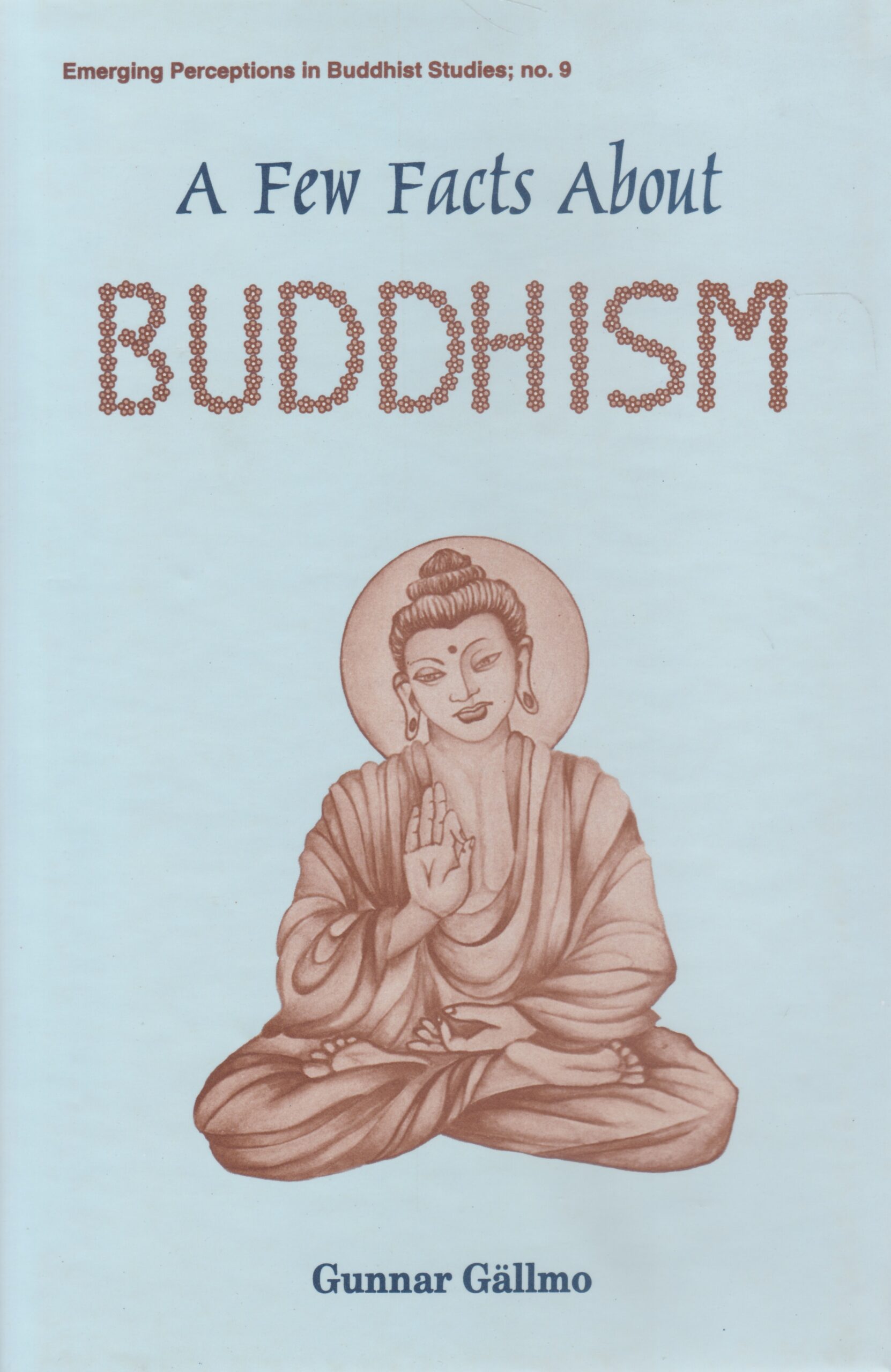
Marshalling facts from the oldest preserved texts, this work studies the Teacher (the Buddha), the Teaching (Dhamma) and the Taught (Samgha) throughout Buddhisms history. It makes a comparative study of Buddhas original teachings and later Buddhist traditions.
Today, when political ideologies/ isms are crashing down and when, at the other end, the great monotheistic religions are trying to survive by turning their backs on logical thinking and intellectual consistency, it might be worthwhile taking a look at the alternatives that by-pass the lopsided views of both materialism and idealism the alternatives that do not have to explain how an omnipotent and all-benvolent God can permit evil, nor how human barbarism can persist doggedly in a progressing world society. And among these alternatives, Gunnar Gallmo rediscovers the oldest existing world religion: the first historically documented case of international (or perhaps non-national) thinking, a teaching that may, more or less, directly or indirectly, positively or negatively, have influenced all later religious, philosophical and political teachings: Buddhism. From the vast corpus of the oldest preserved texts, Gunnar Gallmo marshals facts around Buddhism quintessentially, authentically. His book is a well-knit, at once compelling presentation of the Teacher (the Buddha), the Teaching (Dhamma/Dharma), and the Taught (the Samgha/the Community) throughout the 2500-year-long history of Buddhism: first in India, then in Asia and, finally, today in the world. And since Buddhism is a religion with an actual historical personage as its founder, the author tries to explore how the Enlightened Masters original teaching underwent a change in later tradition, and how the differences between the two have cropped up. With a glossary of Pali/Sanskrit terms and highly significant bibliographic references, this treasury of facts about Buddhism is bound to fascinate scholars and general readers alike.
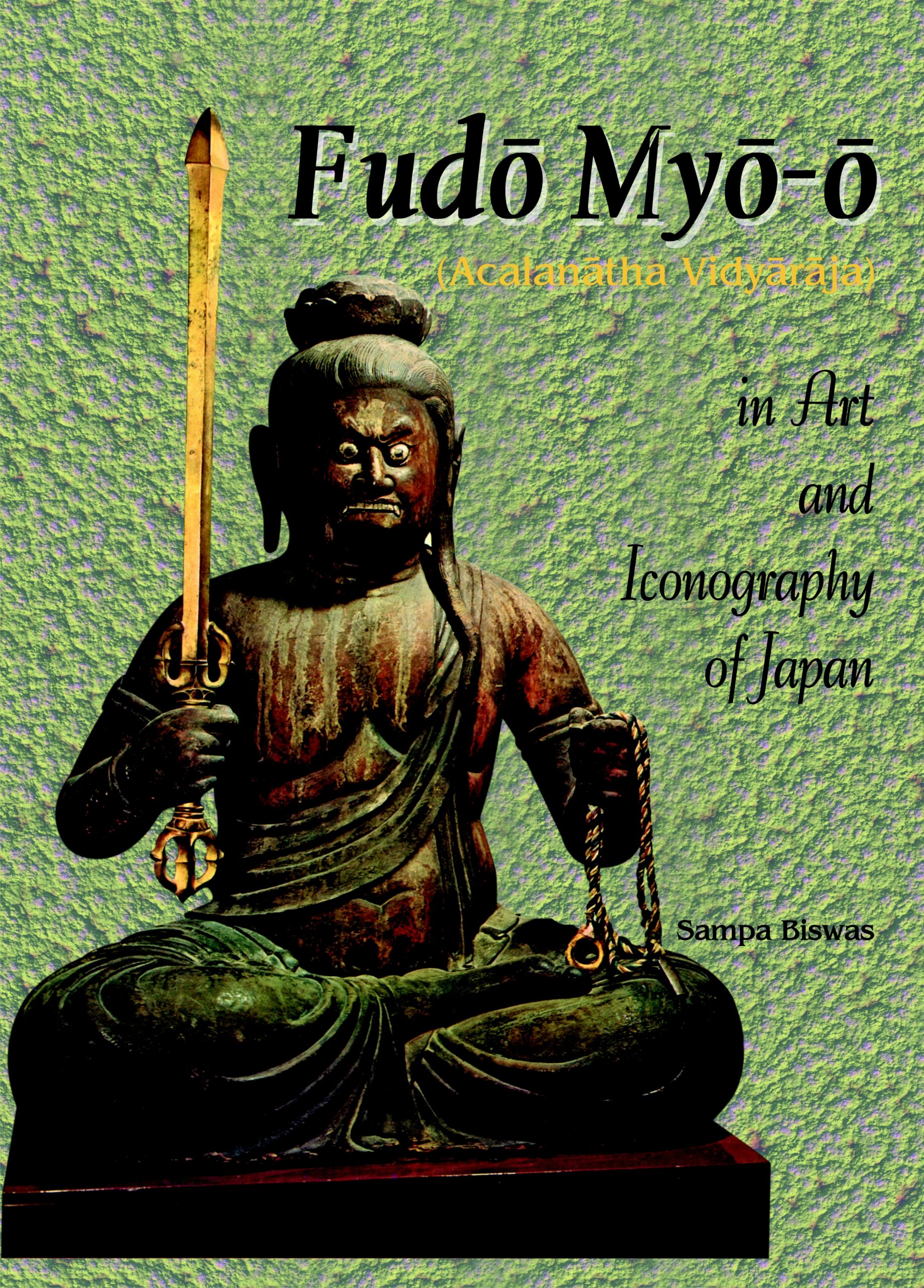
The book discusses the introduction of Buddhism in Japan and its gradual transformation in esoteric doctrines. It also describes Fudo’s iconography, symbolic instruments, mudras, attendants, etc. This work describes the remarkable sculptures, paintings and woodblock prints of Fudo from Heian period.
Shingon Buddhism — esoteric Buddhism brought to Japan from China during the early ninth century — inspired a new spiritual energy that found expression in varied forms, especially in art and iconography. A radical change occurred with the introduction of new deities, among them the Five Great Kings, the most important of them being Fudo Myo-o, the conqueror of all disasters and evil. This book is a study of the concept, iconography and decoction of Fudo in art.
Beginning with a detailed account of the origin of Buddhism and its introduction into Japan, the book focuses on development of esoteric Buddhism in the country. It delves into the uniqueness of Shingon Buddhism rituals which try to evoke the vitality of the three mysteries in the body, speech and thought, the mysteries being transmitted orally from the master to the disciple. Describing Fudo Myo-o as discussed in Buddhist literary sources from India, it takes up his visual representation in painting and sculpture. It discusses the representation of his attendants in art and iconography, symbolic instruments associated with the god in his depiction and interpretations of the mudras (hand gestures, postures, emblems) carried by Fudo. It explains the esoteric meaning attached to various ideas and concepts represented in the visual images.
Supported by numerous illustrations, this detailed and thorough study would enthral students and scholars of Buddhist art and iconography.

One of the earliest authoritative works by a famous Western scholar, on the fundamental aspects of Hinduism, its beliefs, philosophy and practice. It also discusses critically the Vedic and Upaniùadic literature and philosophy, central doctrines, traditions and pilgrim centres.
The book is one of the earliest authoritative works on the fundamental nature of Hinduism, authored by a noted Western scholar, Sir Monier Monier-Williams. The scholarly work deals with the fundamental aspects of Hinduism: the nature of its beliefs, philosophy and practice. It provides precious details on the principal works of Hinduism: the Vedas, the Upanishads and the Dharmashastras. It discusses the essence of the Vedic hymns, the Brahmanas and the sacrificial system, the Upanishadic philosophy, the doctrine of triple manifestations, and the development of sectarian beliefs Shaivism, Vaisnavism and later Shaktism. The in-depth study delves objectively into the major concepts and doctrines associated with Hinduism, such as, the doctrine of incarnation, doctrine of devotion and idol-worship as well as the caste system. It presents a discussion on the famous places held sacred by the Hindus which are the major centres of pilgrimage: the city of Benares, Allahabad, Gaya, Nashik and Haridwar, among others.

One of the earliest authoritative works by a famous Western scholar, on the fundamental aspects of Hinduism, its beliefs, philosophy and practice. It also discusses critically the Vedic and Upaniùadic literature and philosophy, central doctrines, traditions and pilgrim centres.
The book is one of the earliest authoritative works on the fundamental nature of Hinduism, authored by a noted Western scholar, Sir Monier Monier-Williams. The scholarly work deals with the fundamental aspects of Hinduism: the nature of its beliefs, philosophy and practice. It provides precious details on the principal works of Hinduism: the Vedas, the Upanishads and the Dharmashastras. It discusses the essence of the Vedic hymns, the Brahmanas and the sacrificial system, the Upanishadic philosophy, the doctrine of triple manifestations, and the development of sectarian beliefs Shaivism, Vaisnavism and later Shaktism. The in-depth study delves objectively into the major concepts and doctrines associated with Hinduism, such as, the doctrine of incarnation, doctrine of devotion and idol-worship as well as the caste system. It presents a discussion on the famous places held sacred by the Hindus which are the major centres of pilgrimage: the city of Benares, Allahabad, Gaya, Nashik and Haridwar, among others.
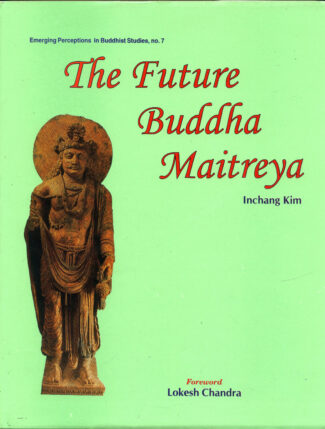
The book highlights the historical evolution of different phases of Maitreya iconography in various regions of the Indian subcontinent. Dr. Kim combines extensive field-work with diverse literary sources to thoroughly explore some problematic issues.
Maitreya is not just one of the myriad divinities of the Buddhist pantheon; he is revered by the devout as the Buddha of the fifth world cycle, the Ultimate Buddha, the Much-Awaited Deliverer, who (like Kalki a would-be incarnation of Visnu in Hinduism) will descend on the earth, in human form, sometime in the distant future and lead people to both enlightenment and the final nirvana. The cult of Maitreya, however, goes as far back as to the second century bc, and even beyond, when perhaps, his images, in varying anthropomorphic forms, came to be chiselled alongside the earliest sculptural representations of the Buddha and Boddhisattvas. Here is the first iconological study to exclusively focus on the Maitreya phenomenon in almost the whole range of Buddhist sculptural art. Exploring the historical evolution of the Maitreya cult, the book admirably highlights the different phases of Maitreya iconography with an in-depth analysis of the images from various regions of the Indian subcontinent Gandhara, Kashmir, Mathura, Sarnath, Nalanda, Orissa, Western Deccan and South India. Dr. Inchang Kim has skilfully combined his extensive fieldwork with diverse literary sources to contextually explore some of the problematic issues to their last thread like, for instance, the genesis of Maitreya cult, its nature in the pre-Christian era, and its role in Hinayana, Mahayana and Yogacara Buddhism. Also spelling out the symbolism of Maitreya iconography, the study specially underscores the iconographic attributes that help not only identify Maitreya, but also distinguish the Buddha of the Future from other Bodhisattvas. Together with a generous supplement of visual material comprising over 240 photographic reproductions with an extensive bibliography and index, the book is invaluable to art historians, connoisseurs/specialists of Buddhist sculptural art and scholars of Buddhist studies.
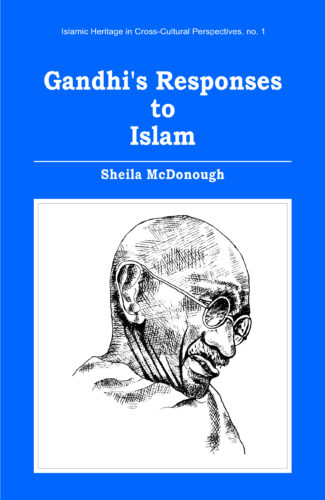
In this first-ever study exploring exclusively Gandhis attitude to Islam, the author puts together many of Gandhis observations about Prophet Mohammed, the holy Quran, and the Islamic faith.
Look at him as we may: whether as an exceptional human being, a modern-age prophet, a unique politician, or a charismatic leader of non-violent movement, Gandhis many-sidedness is proverbial. And, then, he was a religious genius as well with genuine tolerance and respect for all mankinds faiths. Here is the first ever study exploring exclusively Gandhis attitude to Islam, from his childhood to the last years of his phenomenally eventful life. In thematically focussing on his responsiveness to Islam, Dr. Sheila McDonough addresses a vital question: Why did Gandhi say the things, he did, about Islam? Which leads her to meticulously trace, among other determinants, the intellectual influences that had helped shape Gandhis vision of Islam the vision he particularly shared with many of his Indian contemporaries. The author, a widely known authority on Islamic Studies, puts together many of Gandhis observations about Prophet Mohammed, the holy Quran, and the Islamic faith to emphasize that his positive, respectful response to Islam was not a matter of political pragmatism, nor a facade to unify Indians at a critical period of their history, but it went far beyond to a philosophical understanding of the very essence of Islam. Unfailingly convincing, Prof. McDonough combines, in her writing, a rare scholarship with readability that makes her book at once fascinating to both specialists and common readers anywhere in the modern world.
Gita Govinda, a drsya-kavya of Jayadeva, a twelfth-century Sanskrit poet, due to its deep foundations in devotion and exquisite intrinsic beauty, is the most desired in the music and dance of India. This erotic poem, through its three characters in Radha, Krsna and the sakhi, portrays physical love as a metaphor for divine longing of the individual soul to have its union with the Supreme.
The volume in hand presents the primacy of the language in linguistic and literary theories as the vehicle of thought, along with the performing arts background and technical aspects of dance that complement Jayadeva’s composition. It also deals with a setting for the Gita Govinda in terms of its historical context, time, cultural influences and relevance in the arts.
It addresses each and every verse of Gita Govinda with translation and literary notes. Also, it showcases the uninterrupted text in Devanagari along with Romanized transliteration. In a nutshell, the book brings to us a magical world of dance and music through the eyes of a Sanskrit scholar and a mature, expressive dancer in Sharda Narayanan and Sujatha Mohan, respectively.

The study, beautifully illustrated, focuses on the masks of gods, goddesses and demons worn by the Newars of Kath-mandu Valley. It deals with contexts in which the dancers wear the masks and with legends concerning the dances.
The presence of masks as both ritual and art objects is attested among the traditions of mankinds oldest civilisations. Cutting across cultural and geographical barriers, they have exhibited a remarkable range and diversity of meanings throughout history. The present study focuses on the masks worn in the Kathmandu Valley by the main ethnic group, the Newars. A specific aspect of the Newars is that, despite the political dominance of Hinduism, Buddhism is still alive. The masks represent gods, goddesses and demons, but never the dead or the ancestors. The author argues that the reason for the absence of figurations of the dead or ancestors is to be explained by the funerary rituals. There are no memorial monuments or other objects which perpetuate the memory of the deceased: It is through rituals performed after their death that the memory is preserved. The distinction is made between statue-masks and the masks worn during ritual dances. The author focuses on the contexts in which the masks are worn by professional dancers and draws attention to the legends which explain the origin of the dances and their ritual role. Detailed descriptions are given of the dances performed during different festivals in the localities of the Kathmandu Valley. The masks then worn are destroyed and re-made ritually each year by painters. Anne Vergati explains the relation between the dancer as a social person with a social identity and the mask which represents a god or a goddess. The mask is not supposed to hide the face of the dancer but to transform his identity in such a way as to make of him a deity. Supported by numerous illustrations in colour, the book will appeal to historians and connoisseurs of art as well as to scholars of the cultures of the Himalayan regions.
| There are no products |